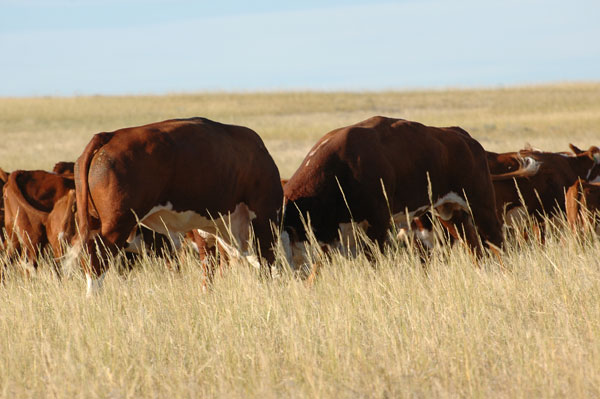While determining parentage of commercial calves may not always be cost-effective, it may pay in certain situations.
October 3, 2018

By Sandy Johnson
While the onset of DNA testing may appear to primarily be a beneficial tool for seedstock producers, there are advantages for commercial cow-calf ranchers as well. However, despite economic difference between offspring of sires, determining parentage of all offspring it is not currently cost effective for most commercial producers. In certain situations, however, it may pay to determine parentage.
As an industry, we have made a good deal of progress in reducing calving difficulty by first using calf birth weight EPDS, and now calving ease EPDs. However, there are still occasions when calving difficulty occurs and if the incidence seems abnormally high, doing a parentage test on the calves with difficult births may be extremely valuable for deciding future matings.
Likewise when working with replacement heifers or weaned calves, there could be some calves that seem more excitable in the chute or even when you enter the pen. The decision to cull a replacement heifer with this attitude is not hard (for me at least), but if there are a number of them, you might want to see if they share a common sire.
Keeping replacement heifers from high accuracy AI sires can help producers reach genetic goals faster. If neither early ultrasound pregnancy detection nor delayed turn in of cleanup bulls was used following AI, there might be some heifers born with ambiguous birth dates: heifers could be AI sired or natural service sired.
With a 10-day gap between fixed-timed AI and turn in of clean up bulls, there is still overlap of birth dates of AI and nature service-sired calves. A parentage test could clarify which heifers are AI sired.
To complete a parentage test, DNA is needed from the offspring and the possible sires. The testing uses a process of elimination to identify individuals that could not be a parent. If potential parents are closely related, such as full or half-sibs, there could be difficulty in ruling out sires and DNA from the dam may be needed.
In some cases, a bull may have already had parentage markers identified as part of a high- density DNA panel completed for genomically enhanced EPDs. Access to this information may vary with breed associations. The same test and associated markers must be used for the offspring and possible parents. For example, tests run with an older microsatellite panel would need to be rerun with current markers.
Collecting and storing either a hair or blood card for use for a future parentage test would be a good risk management step for all bulls in a breeding battery. This could done at the first semen check or other handling. If you needed to determine parentage at a point after one of the possible sires had died or was sold, the samples you collected and stored would still allow you to test. Without DNA from all possible sires, parentage may not be correctly identified.
There are good reasons for commercial producers to strategically use parentage testing. Accurate records of which bulls were used in each pasture are needed. Banking DNA samples from bulls when first purchased may be useful if future trouble shooting is needed.
To understand more about how parentage testing works see “Parentage Testing” on e-beef.org. Also see “Using DNA to determine the performance and economics of commercial herd bulls in multi-sire natural-service breeding groups”.
Johnson is an Extension beef specialist with Kansas State University, based in Colby, Kan.
You May Also Like



